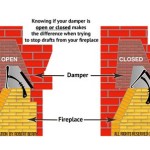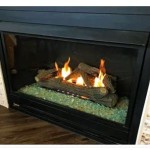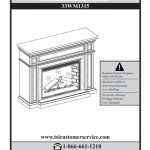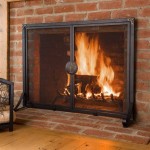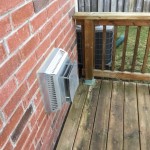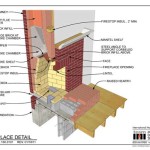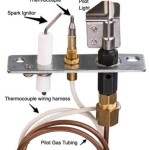Pilot Light Flame Too High On Gas Fireplace: Causes and Solutions
A pilot light is a small gas flame that continuously burns in a gas fireplace. Its primary function is to ignite the main burners when heat is desired. The pilot light ensures that when the thermostat calls for heat, the main gas valve opens, and the gas flowing into the burners is immediately ignited, providing instant warmth and ambiance. A properly functioning pilot light should be a small, steady blue flame. However, if the pilot light flame appears larger than normal or exhibits characteristics beyond a stable blue hue, it indicates a potential issue that needs to be addressed promptly.
An abnormally high pilot light flame on a gas fireplace can lead to several problems. First, it consumes more gas than necessary, resulting in higher energy bills. Second, an excessively large flame can produce soot, which stains the fireplace glass and surround, diminishing the aesthetic appeal. In more severe cases, an out-of-control pilot light can pose a safety risk, potentially leading to carbon monoxide buildup or even a fire hazard if components overheat. Therefore, understanding the causes of a high pilot light flame and knowing how to rectify the situation is crucial for maintaining a safe and efficient gas fireplace.
Clogged Pilot Orifice
One of the most common causes of a high pilot light flame is a partially or fully clogged pilot orifice. The pilot orifice is a tiny opening that meters the flow of gas to the pilot light. Over time, dust, debris, and corrosion can accumulate within this orifice, restricting the gas flow. When the orifice is partially blocked, the gas pressure builds up behind the blockage, forcing more gas through the remaining opening. This increased gas flow results in a larger flame than intended.
To resolve a clogged pilot orifice, the user generally needs to shut off the gas supply to the fireplace at the main shut-off valve, usually located near the fireplace or gas meter. Then, access to the pilot assembly is required, which may involve removing the fireplace's front panel or logs. Once the pilot assembly is accessible, the pilot orifice can be carefully cleaned. A specialized pilot orifice cleaning tool, a thin wire, or even a compressed air duster can be used to dislodge any obstructions. It is important to exercise caution during this process to avoid damaging the delicate orifice. Reassembling the pilot assembly and turning the gas supply back on will allow the user to observe if the cleaning resolved the issue. If the flame remains high, further troubleshooting steps are necessary.
Incorrect Gas Pressure
Another potential reason for a high pilot light flame is incorrect gas pressure. Gas fireplaces are designed to operate within a specific range of gas pressure, typically measured in inches of water column (in. w.c.). If the gas pressure supplied to the fireplace exceeds the manufacturer's specified range, the pilot light will receive an excessive amount of gas, resulting in a larger than normal flame.
Incorrect gas pressure can stem from several sources. First, the gas regulator, located either at the gas meter or within the fireplace itself, could be malfunctioning. The regulator is responsible for maintaining a consistent gas pressure, and if it fails, it may allow excessive gas pressure to pass through. Second, there might be issues with the gas supply line itself, such as a kink or obstruction that increases the pressure. Third, other appliances on the same gas line could be drawing excessive gas, leading to fluctuations in pressure available to the fireplace.
Addressing gas pressure issues typically requires a qualified gas technician. They possess the necessary tools and expertise to measure the gas pressure accurately and diagnose the root cause of any pressure discrepancies. If the gas regulator is faulty, it may need to be repaired or replaced. If the problem lies with the gas supply line, they can identify and resolve any obstructions or leaks. Attempting to adjust gas pressure without proper training and equipment can be dangerous and should be avoided.
Malfunctioning Thermocouple or Thermopile
While not directly causing a high flame, a malfunctioning thermocouple or thermopile can indirectly contribute to the problem by causing the pilot valve to remain open longer than necessary. The thermocouple and thermopile are safety devices that generate a small electrical current when heated by the pilot light. This current, in turn, keeps the pilot valve open, allowing gas to flow to the pilot light. If the thermocouple or thermopile is failing, it may not generate sufficient current, causing the pilot valve to flicker or even shut off intermittently. To compensate for this, some individuals might inadvertently increase the pilot flame height in an attempt to maintain a stable pilot light.
Diagnosing a malfunctioning thermocouple or thermopile involves testing the output voltage using a multimeter. The manufacturer's specifications will indicate the acceptable voltage range. If the voltage falls outside this range, the thermocouple or thermopile needs replacing. Replacement procedures vary depending on the fireplace model but generally involve disconnecting the old thermocouple or thermopile and connecting the new one, ensuring proper contact and secure connections. Once replaced, the pilot light should operate more reliably, eliminating the need for an excessively high flame.
In summary, a high pilot light flame on a gas fireplace is a symptom of underlying problems, ranging from simple clogs to more complex issues with gas pressure or safety devices. Regular maintenance, including cleaning the pilot orifice and visually inspecting the flame, can help prevent many of these problems. However, when faced with a persistent high pilot light flame, consulting a qualified gas technician is always recommended to ensure safe and effective repairs.

Adjusting Fireplace Pilot Flame
Superior Flame Adjustment Hearth Com Forums Home
How To Adjust The Pilot Light On Gas Logs Hunker

How To Test If Your Pilot Flame Is Bad Www Mygasfireplacerepair Com

Gas Fireplace Adjustment Without Hi Low Switch Doityourself Com Community Forums

Low Flame Height On Log Set Doityourself Com Community Forums
What S The Proper Pilot Adjustment For Vs8420e 2024 Honeywell Lp Gas Valve Hearth Com Forums Home

Gas Fireplace Low Flame Doityourself Com Community Forums
What S The Proper Pilot Adjustment For Vs8420e 2024 Honeywell Lp Gas Valve Hearth Com Forums Home
My Gas Fireplace Pilot Light Works Perfectly However When I Flip The Switch For Rest Of To Turn On Nothing Happens What Quora
Related Posts

